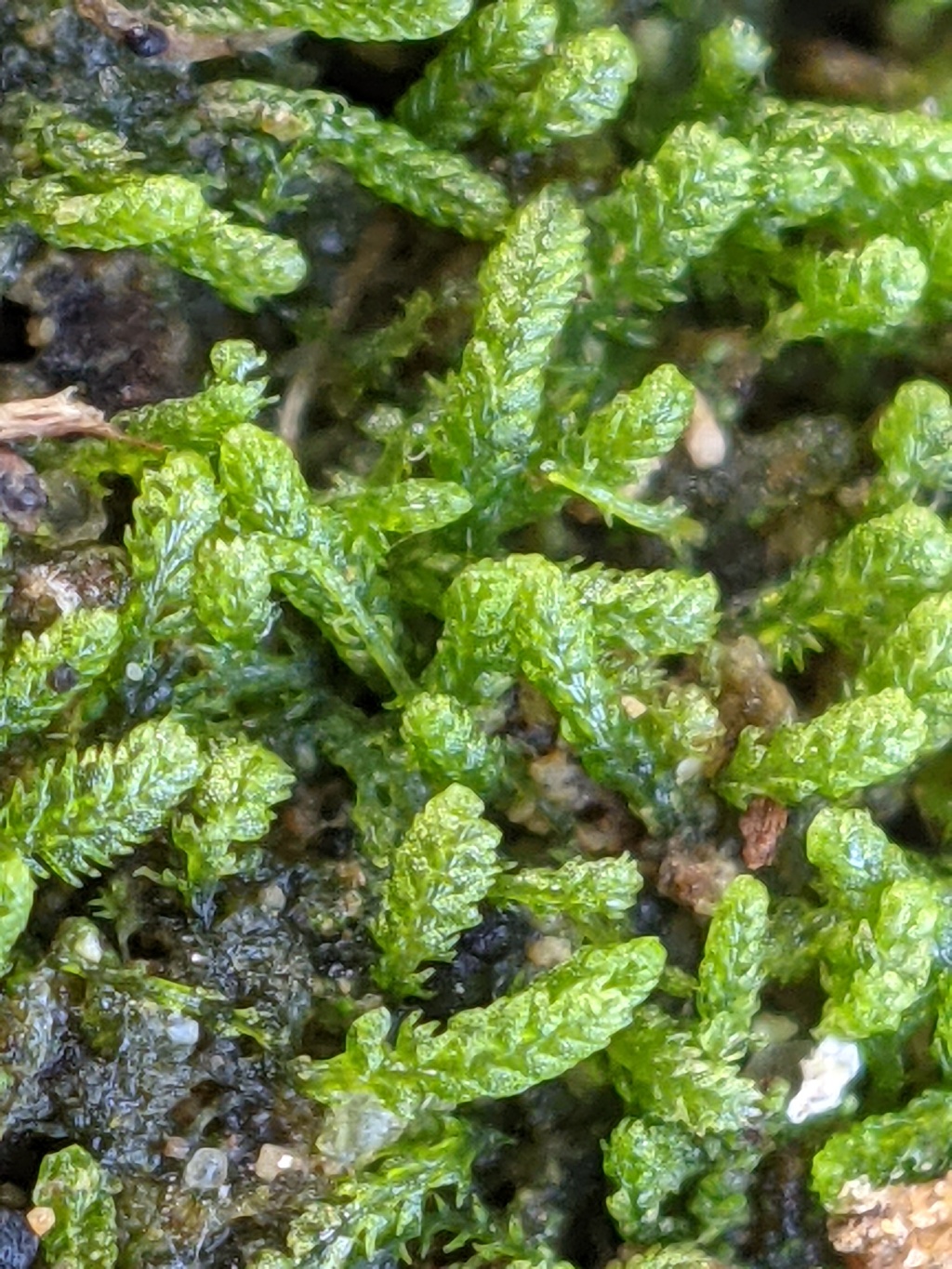Drucella
Terrestrial, dioecious. Specialised asexual propagules absent. Stems differentiated into creeping axes with reduced leaves and erect to ascending simple or sparingly and irregularly branched axes with normal leaves, with two ranks of lateral leaves and a single rank of underleaves; branches emerging from stems from near unmodified lateral leaves and with a collar of tissue at base. Lateral leaves obcunete in outline, 3-, rarely 2-lobed, wide-spreading, incubous, alternate, remote to imbricate, entire, collectively pale or whitish green, unistratose; lobes narrowly triangular, unequal, smallest on acroscopic side, acute. Underleaves quadrate in outline, 3-, rarely 2-lobed, much smaller than lateral leaves, wide-spreading, distant; lobes formed by 1–2 cells, with a terminal slime papilla. Leaf cells oblong to polygonal, smooth, evenly thick-walled, without trigones, without oil bodies. Rhizoids at underleaf and lateral leaf bases on creeping axes. Androecia on short branch emerging lateral or abaxially from stem, with 5–8 pairs of bilobed bracts, each with a single antheridium. Sporophyte on short branch emerging lateral or abaxially from stem, surrounded by 2–3 series of bracts much more elongate than lateral leaves, with narrowly triangular and acuminate lobes. Perianth ovoid-cylindric; mouth lobulate-ciliate. Capsule ovoid, bistratose; elaters bispiral. Spores spherical, finely areolate, yellow-brown.
One species, D. integristipula (Steph.) Hodgs., in New Zealand and eastern Australia (Schuster 1980; Boesen 1982).
Boesen, D.F. (1982). The taxonomy of Drucella Hodgs. and Drucelleae, trib. nov. and their position within Lepidozioideae Limpr. Lindbergia 8: 77–88.
Schuster, R.M. (1980). Studies on Hepaticae, LIV–LVIII. Kurzia V. Mart. [Microlepidozia (Spr.) Joerg.], Megalembidium Schust., Psiloclada Mitt., Drucella Hodgs. and Isolembidium Schust. Journal of the Hattori Botanical Laboratory 48: 337–421.
 Spinning
Spinning